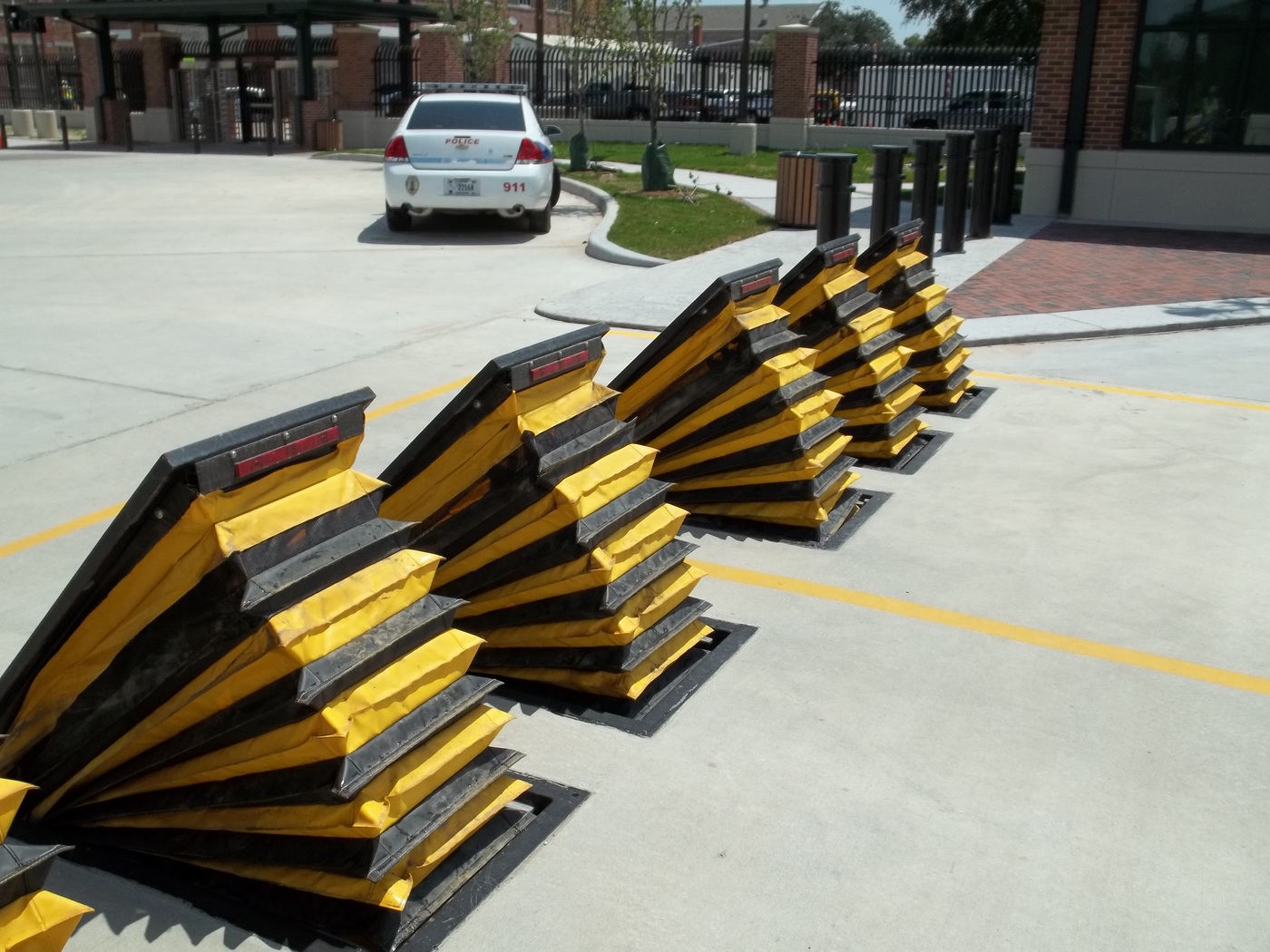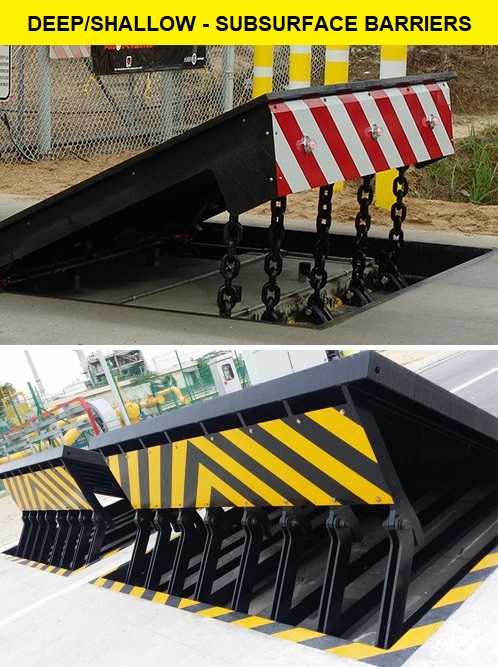A Biased View of Wedge Barriers
Wiki Article
The Definitive Guide for Wedge Barriers


The spring rod 58 is paired to a cam(e. g., webcam 80 received FIG. 4) of the lifting mechanism 50. The springtimes 60 disposed regarding the springtime rod 58 are kept in compression by springtime supports 62, including a dealt with spring support 64. That is, the fixed spring support 64 is fixed about the structure 14 et cetera of the bather 10.
See This Report on Wedge Barriers
g., click now spring assistance 65 )may be taken care of to the end of the spring rod 58 to enable compression of the springtimes 60. As the springtimes 60 are compressed in between the spring sustains 62, the spring assembly 54 generates a pressure acting on the webcam coupled to the spring rod 58 in a direction 66. The continuing to be pressure applied to the cam webcam deploy the wedge plate 16 may be provided offered an electromechanical actuator 84 or other actuator. The spring setting up 54 and the actuator 84(e. g., electromechanical actuator)might run together to convert the camera and lift the wedge plate 16.
As stated above, the springtime assembly 54 puts in a continuous force on the camera, while the electromechanical actuator may be controlled to apply a variable pressure on the camera, thus making it possible for the training and reducing( i. e., deploying and withdrawing )of the wedge plate 16. In certain personifications, the constant force used by the spring assembly 54 might be flexible. g., electromechanical actuator) is disabled. As will certainly be appreciated, the spring setting up 54 might be covered and shielded from particles or other components by a cover plate(e. g., cover plate 68 revealed in FIG. 4) that might be significantly flush with the elevated surface 38 of the structure 14. As discussed above, in the released position, the wedge plate 16 serves to block gain access to or traveling beyond the barrier 10. As an example, the barrier 10(e. g., the wedge plate 16 )may obstruct pedestrians or vehicles from accessing a residential property or path. As discussed above, the obstacle 10 is connected to the support 30 protected within the foundation 14,

front brackets 71. Consequently, the affiliation assemblies 72 may pivot and revolve to enable the collapse and expansion of this link the linkage settings up 72 during retraction and deployment of the bather 10. The affiliation settings up 72 reason motion of the wedge plate 16 to be limited. For instance, if a car is traveling towards the released wedge plate 16(e. For instance, in one situation, the safety legs 86 might be expanded duringupkeep of the barrier 10. When the safety and security legs 86 are deployed, the security legs 86 support the weight of the wedge plate 16 versus the surface 12. Consequently, the lifting system 50 may be shut down, serviced, removed, replaced, and so forth. FIG. 5 is partial viewpoint sight of an embodiment of the surface-mounted wedge-style obstacle 10, showing the cam 80 and the cam surface areas 82 of the training mechanism 50. Particularly, 2 web cam surface areas 82, which are referred to as lower camera surface areas 83, are placed below the cam 80. The reduced webcam surface areas 83 might be repaired to the surface area 12 (e. For instance, the reduced camera surfaces 83 and the installing plate 85 may create a single piece that is secured to the anchor 30 by screws or various other mechanical bolts. In addition, 2 webcam surface areas 82, which are described as top cam surfaces 87, are placed over the camera 80 and paired to (e. In other embodiments, intervening layers or plates might be placed between the surface 12 and the reduced cam surface areas 83 and/or the wedge plate 16 and the upper web cam surface areas 87 As mentioned over, the web cam 80 translates along the webcam surface areas 82 when the wedge plate 16 is lifted from the retracted position to the deployed setting. Furthermore, as discussed over, the springtime setting up 54 (see FIG. 3 )may supply a force acting upon the web cam 80 in the instructions 102 via springtime rod 58, which may reduce the pressure the electromechanical actuator 84 is called for to use to the cam 80 in order to actuate and raise the wedge plate 16. 1 )to the deployed placement(see FIG. 4). As shown, the webcam 80 includes track wheels 104(e. g., rollers), which call and translate along the camera surface areas 82 throughout operation.
Report this wiki page